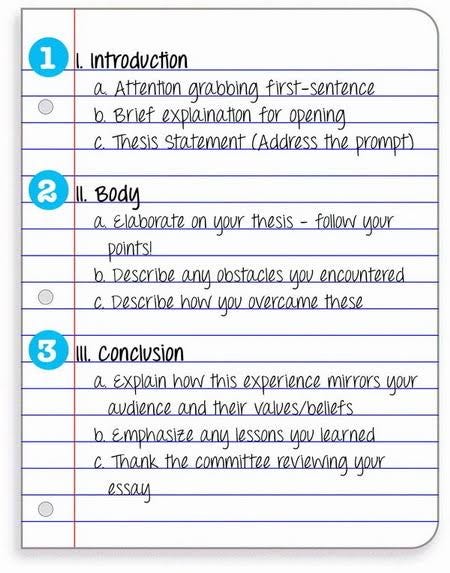A Comprehensive Guide on How to Write an Effective Essay
A Straightforward Guide on How to Write an Effective Essay
Ever felt stuck staring at a blank page, wondering how to start your essay?
Trust me, you’re not alone.
Writing an essay can seem like a huge task. But it doesn’t have to be.
In this guide, I’m breaking down the essentials of essay writing into bite-sized pieces.
Whether you’re in high school or finishing up your degree, mastering essay writing is a must.
Let’s dive into some straightforward tips, structures, and techniques that’ll help you write an essay that’s not just good but great.
Understanding the Basics of Essay Writing
First off, let’s get clear on what an essay is.
An essay is a focused piece of writing that develops an idea or argument, using evidence and analysis.
The type of essay you write might depend on your level, subject, and what your course requires.
Types of Essays
I’ve encountered a few different types of essays during my academic journey. Here’s a quick rundown:
- Narrative Essays: These tell a story from a specific viewpoint.
- Descriptive Essays: Think of these as painting a picture with words about a person, place, or event.
- Expository Essays: These explain a topic plainly, without fluff.
- Persuasive Essays: The goal here is to convince the reader of a particular viewpoint.
- Argumentative Essays: These present arguments for or against an issue.
Each essay type has its own quirks, but they all follow a similar structure, which I’ll unpack shortly.
The Essay Writing Process
Writing an essay can be broken down into three key stages: preparation, writing, and revision.
Each stage is crucial for creating a clear and effective essay.
1. Preparation
Preparation is where it all begins. Here’s how I tackle this stage:
- Understand the Assignment: What are the goals? Length? Deadline? If I’m unsure, I ask my teacher.
- Define a Topic: If I can choose, I pick something I’m passionate about. Writing becomes much easier when you care about the topic.
- Do Your Research: I gather information from primary and secondary sources. Note-taking helps me figure out my stance.
- Develop a Thesis Statement: This is my main argument, keeping my writing focused and guiding my readers.
- Create an Outline: Mapping out my essay helps me stay organised and makes writing less overwhelming.
2. Writing
Once I’m prepped, it’s time to write. Here’s my approach:
Writing the Introduction
The intro is my chance to grab the reader’s attention. Here’s how I do it:
- Hook the Reader: I start with an interesting fact or question to get them curious.
- Provide Background Information: I give just enough context without drowning them in details.
- Present the Thesis Statement: Clearly stating my main argument here is key.
- Map the Structure: For longer essays, I briefly outline what’s coming next.
Example of an Essay Introduction
“The invention of Braille marked a major turning point in the history of disability. The writing system of raised dots, developed by Louis Braille in nineteenth-century France, changed everything. This essay discusses the situation of blind people in nineteenth-century Europe and explores the wide-ranging effects of Braille.”
Writing the Body
The body is where I make my case. It’s usually 60-80% of my essay. Here’s how I structure it:
- Paragraph Structure: Each paragraph focuses on one main idea, introduced by a topic sentence. I use transition words to connect ideas.
- Present Evidence: I back up my arguments with data, examples, or quotes from credible sources.
- Interpret and Explain Evidence: I make sure to connect the evidence back to my main argument.
Example of a Body Paragraph
“Lack of access to reading and writing put blind people at a serious disadvantage in nineteenth-century society. Text was a primary way people engaged with culture, and without a reading system, blind individuals were excluded from social participation.”
Writing the Conclusion
The conclusion is my last chance to make an impact. Here’s what I focus on:
- Return to the Thesis: I reinforce my main argument.
- Tie Together Main Points: I summarise the key ideas from the body.
- Show Why My Argument Matters: I highlight the broader significance of my argument.
- End with a Memorable Statement: I want to leave my readers with a strong final impression.
Example of a Conclusion
“Braille paved the way for dramatic cultural changes in the treatment of blind people. Louis Braille’s innovation provided practical benefits and helped shift societal attitudes towards blindness.”
3. Revision
Revising is where I really polish my ideas. Here’s what I focus on:
- Content: Does my essay effectively communicate my ideas? Am I backed up with enough evidence?
- Organization: Is my essay logically structured? Do my paragraphs flow smoothly?
- Grammar and Spelling: I proofread carefully to catch any mistakes.
- Formatting: I double-check that I’m following any required formatting guidelines.
Tips for Effective Essay Writing
Here are some handy tips I’ve picked up along the way:
- Be Clear and Concise: Clarity is key. Avoid overly complex sentences.
- Use Active Voice: Writing in active voice makes it more engaging.
- Vary Sentence Structure: Mixing short and long sentences keeps things interesting.
- Stay On Topic: Ensure every paragraph supports my thesis.
- Seek Feedback: Sharing my essay with peers or instructors can give me valuable insights.
FAQs About Essay Writing
What is the structure of an essay?
An essay typically has three main sections: an introduction, body paragraphs, and a conclusion.
How long should my essay be?
Essay length can vary, but it usually ranges from 500 to 5000 words, depending on the assignment.
What is a thesis statement?
A thesis statement is a concise summary of the main point or claim of your essay, usually one or two sentences long.
How can I improve my writing skills?
Regular writing practice, extensive reading, and seeking feedback can significantly enhance your writing skills.
What resources can I use for essay writing?
There are many online resources, such as Scribbr and wikiHow, that offer valuable tips and examples.
Conclusion
Writing an effective essay doesn’t have to be a hassle.
With this straightforward guide, I’ve unlocked the secrets to crafting essays that impress.
From understanding the structure to applying essential writing tips, I now feel ready to engage my readers and convey my ideas clearly.
Remember, practice makes perfect. So, don’t hesitate to write and revise until you’re satisfied.
Happy writing!




For more insights on essay writing, check out the Essay Writer tool. It can help you brainstorm and structure your essays effectively.
This guide has given me the tools to tackle essay writing with confidence.
By understanding the components of an effective essay and implementing the tips shared, I’m ready to engage my readers and share my ideas clearly.

